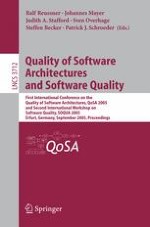2005 | Buch
Quality of Software Architectures and Software Quality
First International Conference on the Quality of Software Architectures, QoSA 2005, and Second International Workshop on Software Quality, SOQUA 2005, Erfurt, Germany, September 20-22, 2005. Proceedings
herausgegeben von: Ralf Reussner, Johannes Mayer, Judith A. Stafford, Sven Overhage, Steffen Becker, Patrick J. Schroeder
Verlag: Springer Berlin Heidelberg
Buchreihe : Lecture Notes in Computer Science
